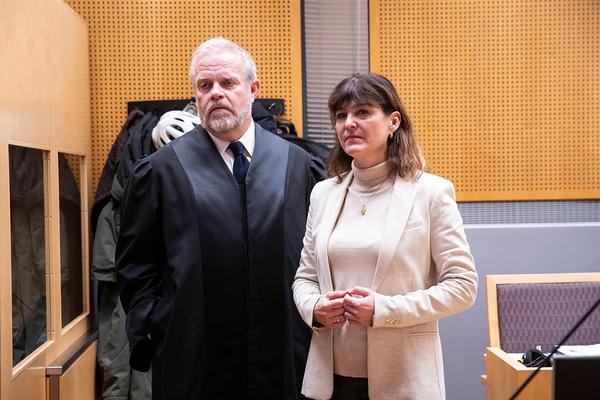19. november 2015
Five Trends In Advertising

Technology and new user behaviors are changing the game of advertising. With a range of new opportunities and tougher competition […]
Technology and new user behaviors are changing the game of advertising. With a range of new opportunities and tougher competition marketeers and sales people need to be more innovative than ever when understanding, reaching and engaging with customers. Kathrine Brøsholen, VP Schibsted Sales, guides us through five trends that are changing the business.
With a complex buying environment and more players on the advertising market the content is becoming more crucial in order to tailor it to create value. New technology that gives us insight has made this possible and it is already giving us new ways to develop products and services. Today Schibsted reaches more than 200 million people every month from Malaysia, to Brazil, Mexico and Norway. Since the new technology has helped bring the world closer together, the opportunities are many.
Insight has been used for years with the classic packaging of products, like buying a newspaper and getting offered a bottle of water, or buying a magazine and being offered a Snicker bar. The product offered matched what was presumed as the reader profile, and illustrates an easy way to use insight towards conversion of a product. This will all play out more personalized, as the web is now all about the user ID and it will be important to offer the right product in relation to the right content, at the right time, when the user is in the right mood.
Award winning examples
A modern version of using this insight is driven by technology and the ability to predict the reader profile and to actually get the user to buy a product when clicking on the online ad. There are already many innovative award-winning examples where Schibsted together with advertisers are using new technology and insight to create solutions that secure an effective communication. The products or services that are offered are adjusted to the user’s daily needs, where additional data like geography are giving a more accurate prediction to reach the right user at the right time. For the users, the benefits are convenient and are making the buying process more efficient, since they don’t need to contact the suppliers to get a product delivered; now you can even buy a car on the Internet.
The same change is also happening for business to business sales, where on an average 57 per cent of the purchase process is handled without contacting the supplier. For companies with high digital maturity it’s up to 90 per cent. This indicates that the traditional local competition is about to change for many industries as many offline industries are going online.
International competition is raising the bar
International players are now collaborating to create tools that will make it easier to buy and sell towards a broader audience through an automated buying process within the media industry. This means that the international competition is raising the bar, with a new level of technical solutions and storage of data and a new world of context.
The media landscape might be seen as complex, but there is still just a seller side and a buyer side. On the seller side there’s the advertiser, the media agency and their trading desk and on the other side is the publisher with the consumer reading the news and using the online services.
For the B2B sales and the digital advertising it’s crucial to create greater process efficiencies that drive more commerce, and enable deeper engagement with consumers.
We can sum up five trends that are driving and improving these changes:
1. Automated processes
The automated process has been at various stages since the end of the 80’s with focus on how to minimize waste, to create more value for the customer, with fewer resources and lower prices. The same efficiency is now reaching the media industry where the online ad spending in Europe are on course to surpass outlays on any other media platform by 2018, according to the Interactive Advertising Bureau Europe (IAB Europe) and IHS Technology.
Automated or “programmatic” ad buying will be the main driver of this growth. Previously too many players have been involved in executing online advertising, but this is now changing due to speed and cost. The efficiency will continue to develop through open ecosystem so more companies and agencies can connect to streamline the workflow.
The greatest change with connecting ad technologies and data, is that the process involving media planning, buying and selling will be simplified. This means that more people and specialized skills can be dedicated toward the creative side and new insights can be used to engage and create effective ads that drive commerce, like native advertising, sponsorships, content marketing etc.
A report from IAB Europe verifies the benefits with programmatic advertising. 454 marketers were asked, “Why and how programmatic is emerging as key to real-time marketing success”. 54 per cent replied that it improved their ad targeting, 50 per cent said it enabled them to react to market circumstances in real-time. In addition 35 per cent related it to reduced waste and created value in relation to personalized ads, time to market and tracking of the campaign.
2. Personalized experience
Since the cookies, in time, will disappear and the open ecosystems will enable companies to join forces, we will see more login solutions for users to get access to full-service functionality. This will improve user data and will give an even broader access to a personalized experience for the ad targeting. Among most important factors behind a successful advertising campaign, targeting is ranked number one, where traditionally budget and creativity has been considered to be the most important factors behind a successful campaign.
3. Across digital touchpoints
The access to user data is setting new trends within the targeting and real-time marketing and is therefore evolving – marketeers are more focused on creating fresh, timely content to reach consumers across digital touchpoints. This is also the biggest challenge. In a report from IAB for the US Fortune 500, CMOs stated that reaching the consumer across digital touchpoints and finding a steady stream of relevant content is rated as top two most important challenges.
In addition mobile keeps expanding when desktops ads are expected to decrease.
4. SMEs will drive more growth
Today, it’s easier to establish a start-up than at any other time in our history, and it is likely to only get easier in time. In the EU small and medium enterprise are defined as the backbone of Europe’s economy as they represent 99 per cent of all businesses in the EU. In the past five years, they have created around 85 per cent of all new jobs and the European Commission consider SMEs and entrepreneurship as key to ensure economic growth, innovation, job creation and social integration in the EU. This will have an enormous impact on local trade, as the small and medium sized enterprises are established locally with a need for being visible and convert their product and services in a cost-effective way.
5. Sales experience is crucial
The great news with the market changes is that the sales experiences are crucial for the B2B sales. The consumers are also actually saying that they would like to speak to a physical person, when picking up their newly bought car. With more consumer data being generated and when insight is the key to create value, there is a need to have an early advice on the choice of ad solution. This is what sales professionals in Schibsted are doing today. They challenge their customers to really think differently and they teach them something new. They lead the purchasing process with insights that helps companies uncover problems and opportunities that they probably didn’t even know were there. Sales professionals who advance and challenge their customer’s thinking have a big impact. In fact, research has found that across all industries in B2B sales, 53 per cent of customer loyalty is driven solely by the quality of the sales experience and the way sales professionals are tailoring insights to create value in customer interactions.
“The media landscape might be seen as complex, but there is still just a seller side and a buyer side”
Schibsted’s vision is to enable advertisers to reach a precise audience by using all of Schibsted’s valuable data in local markets on a global scale. Together with our partners we will be able to pursue clear goals, secure risk and investments for the campaigns in a more digital future.
The Schibsted Future Report is our outlook at trends and phenomena happening around us. Things we believe are shaping the future and stories that we want to share with you and the world around us.
Read more at futurereport.schibsted.com



